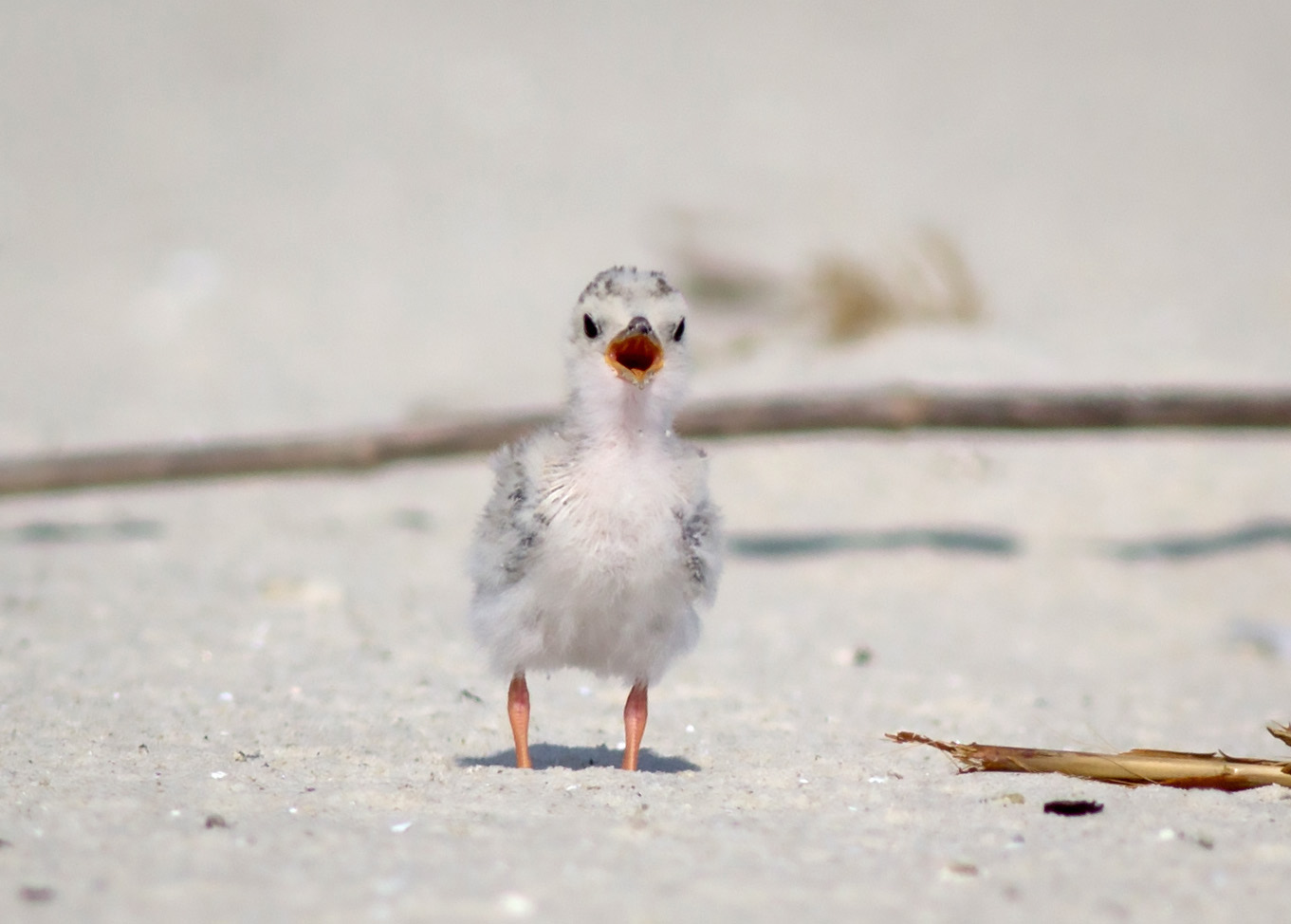by Sarah Randolph, Birmingham Audubon Outreach & Communications Director
In 2017, Birmingham Audubon established their first Coastal Programs office, providing critical protection and monitoring for Alabama’s sensitive beach-nesting birds. Through the diligent efforts of science staff and volunteers, the Alabama Coastal Bird Stewardship Program and the Audubon Coastal Bird Survey are focused on the continued breeding success of eleven priority species of concern.
Photo by Katie Barnes, Birmingham Audubon of a young, flightless Least Tern chick on July 23, 2018.
 Among those species are Least Terns, a small beach nester whose eggs sit in shallow scrapes in the sand. Katie Barnes, Birmingham Audubon’s Senior Coastal Biologist, has referred to them as the “world’s best parents” because, despite their small size, they fiercely defend their young. The smallest of American terns, their eggs are close to the size of grapes.
Among those species are Least Terns, a small beach nester whose eggs sit in shallow scrapes in the sand. Katie Barnes, Birmingham Audubon’s Senior Coastal Biologist, has referred to them as the “world’s best parents” because, despite their small size, they fiercely defend their young. The smallest of American terns, their eggs are close to the size of grapes.
Data collected by the team over the last year indicate that Least Terns have not been doing as well as previously believed due to predation, habitat loss, and habitat fragmentation among other disturbances. A discovery made last month, however, gave the biologists hope for this threatened population. Birmingham Audubon’s Coastal Biological Technician, Emma Rhodes, and Seasonal Steward, Andrew Haffenden, key members of the Coastal Programs team, found a colony of around six-hundred Least Terns nests on Sand Island, a small spit of land off the Dauphin Island coast.
The discovery was bittersweet, however, as the team soon came across an erected volleyball net and abandoned plastic tent poles. To add insult to injury, Rhodes and Haffenden found close to thirty Least Terns eggs placed in a circle in the sand, taken from their nests to make room for a volleyball game—clearly the work of humans. The biologists found at least a hundred nests in this site that were abandoned, the parents likely scared off by the beachgoers. Sadly, just a few hours of exposure to the heat is enough to kill the chicks growing inside the eggs, according to Roger Clay, a wildlife biologist with the Alabama Department of Conservation and Natural Resources.
Barnes quickly notified the U.S. Fish and Wildlife Service, since Least Terns are federally protected under the Migratory Bird Treaty Act. An investigation is now underway with the Department of Justice, and Barnes had the island added to the local state conservation agency’s patrol route. Additionally, she and her team posted signs and fencing around the colony the next day to prevent further human disturbance. According to Barnes, there have been no signs of human activity on the island after the fencing and signs were installed.
“While the Sand Island colony took a hard hit, the birds still managed to fledge eighty-three chicks, all thanks to our coastal team’s quick response,” said Ansel Payne, Executive Director of Birmingham Audubon. “We hope this can be an educational opportunity about how important it is for beachgoers to share the shore and respect the wildlife.”
Separated from the mainland and away from natural predators, Sand Island appears to be the terns’ best hope for survival in Alabama. According to Barnes, if this little strip of sand is still there next summer—a big if in the hurricane-prone Gulf of Mexico—the Coastal Programs team plans on pre-fencing the whole area to head off another beach-day tragedy.
You can make a tax-deductible gift to Birmingham Audubon to aid in their conservation and education efforts. Just visit www.birminghamaudubon.org/give.